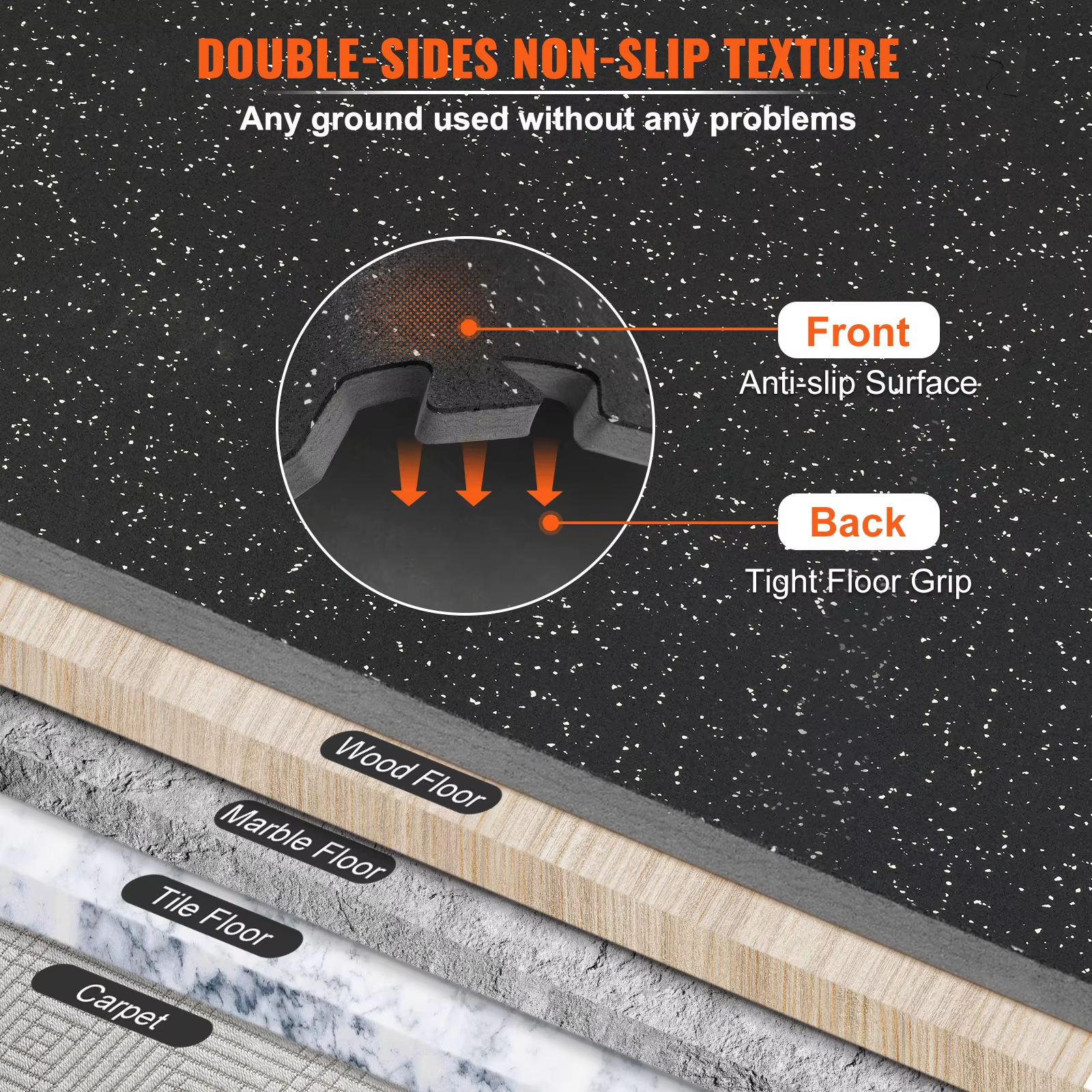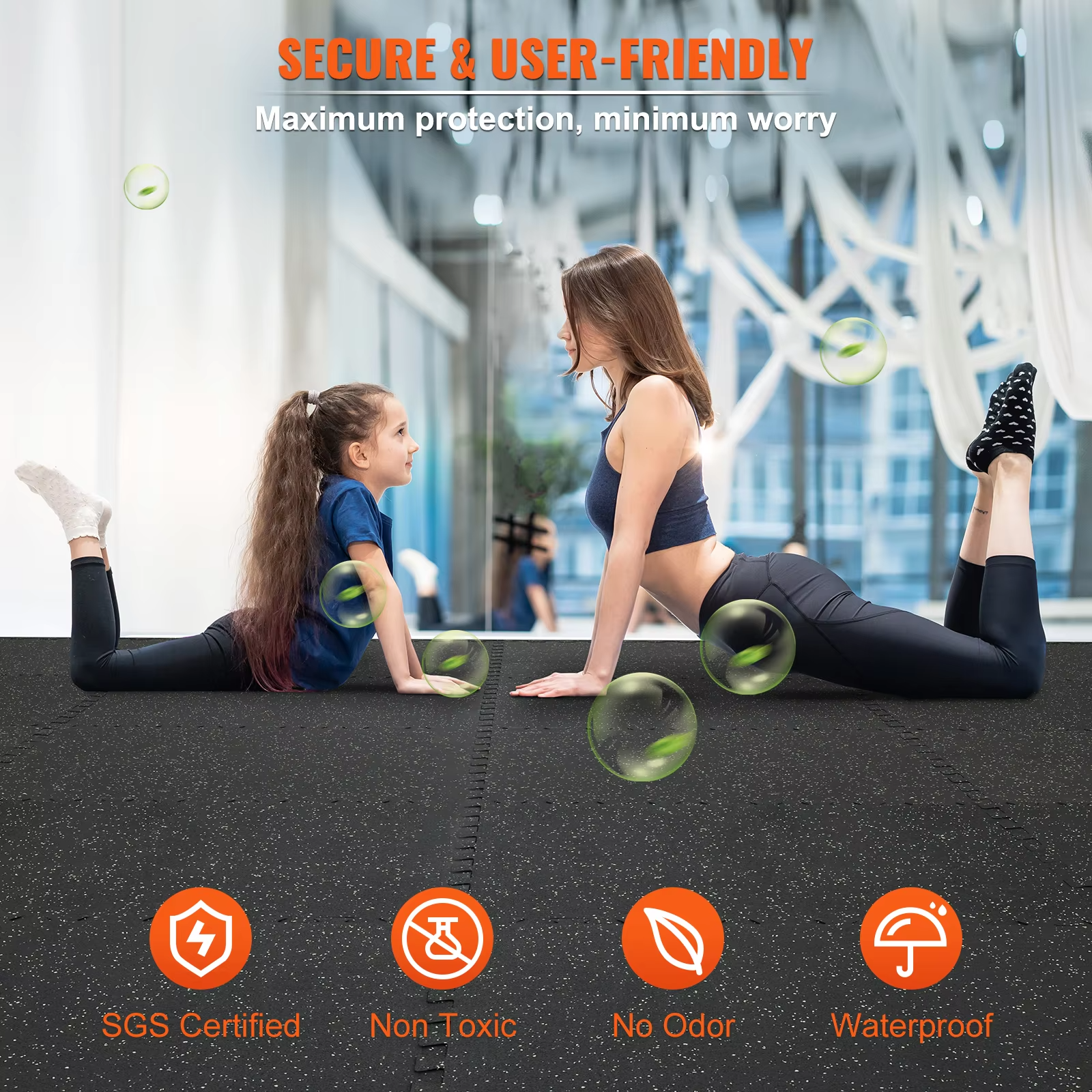Drawers Dresser
Original price was: 113.00$.45.35$Current price is: 45.35$.Gym Floor Mats
Description
A Complete Guide to Gym Floor Mats: Their Types, Advantages, and Choice
Setting up a home or commercial gym requires much more than merely choosing the right equipment. One of the most important yet overlooked parts is the gym flooring. Gym floor mats play an important role in protecting your floors, increasing safety, and upgrading your working out experience. This article goes into detail to explore the world of gym floor mats, looking at the different types, benefits, and how to choose appropriately for your needs.
Why Gym Floor Mats Are Important
Gym floor mats are used for a variety of purposes: providing an evenly stable workout surface, protecting your floors, and protecting your equipment. Some of the reasons why they are indispensable will be seen below.
- Floor Protection: Heavy machinery such as treadmills, weights, and benches can scratch up conventional floors. Mats inhibit dents, scratches, and cracks.
- Noise Reduction: Gym floor mats absorb impact and reduce noise substantially due to dropping weights or high-intensity movements.
- Safety: The non-slip nature reduces injuries that could be brought about by slipping and falling during workouts.
- Comfort: Mats cushion and, therefore, make exercises such as yoga, pilates, or floor stretches comfortable.
- Improved Durability: These mats cushion the impact of weights and foot traffic, adding life to your machines and the flooring in your gym.
Types of Gym Floor Mats
The choice of gym flooring depends on your type of workout, your budget, and space. Following are some of the most popular types of gym floor mats:
-
Rubber Gym Mats
Rubber gym mats are probably among the most durable and versatile alternatives available.
Pros:
High durability
Shock absorption for heavy weights
Non-slip surface for safety
Water-resistant and easy to clean
Best for: Weightlifting areas, commercial gyms, and high-impact workouts.
Popular Options:
- Rubber Rolls: Perfect for seamlessly covering large spaces.
- Interlocking Tiles: Easy to lay and customize for the smallest spaces.
-
Foam Gym Mats
The foam mats have a softer, cushier feel than their rubber counterparts.
Pros:
Lightweight and portable
Inexpensive
Ideal for low-impact exercises
- Best for: Yoga, pilates, stretching, and children’s play areas.
- Disadvantages:
- Limitations:
Foam mats are not recommended for heavy weights or high-impact because they can tear or compress over time.
-
PVC and Vinyl Mats
These vinyl and PVC material mats are excellent in durability and in adding sophistication to the area of the gym.
Pros:
Resistant to wear and tear
Easy to clean and maintain
Can handle moderate to heavy equipment
- Best for: Cardio machines like treadmills and ellipticals.
-
Carpet Tiles
Carpet tiles are less common but work for specific spaces.
Pros:
Soft and comfortable underfoot
Noise reduction
Warm in cold climates
- Best for: Multi-purpose spaces where aesthetics and comfort are a priority.
Disadvantages:
Carpet tiles can absorb sweat and moisture, requiring frequent cleaning to avoid odors and stains.
-
Turf Mats
Turf mats are synthetic grass surfaces designed to mimic the feel of outdoor workouts.
Pros:
Ideal surface type for sled pushes, agility drills, and functional training
Long-lasting and tough
Pleasant to look at
- Best for: Functional fitness areas, sports training, and high-performance gyms.
-
Horse Stall Mats
A cheap option, horse stall mats first targeted livestock before turning into a durable option in the gym.
Pros:
Super-durable and cheap
Excellent shock absorption
Thick, non-slip
- Best for: Budget home gyms, especially in an area for weightlifting.
Key Features to Consider in the Best Gym Floor Mats
When choosing the best gym floor mats, consider the following key features:
- Thickness:
Thicker ones (8mm-1 inch) work better for high-impact activities like weight training.
Thinner mats of about ¼ inch are good for light exercises, including yoga or cardio.
- Material:
Rubber gives the best durability and impact resistance.
Foam provides comfort but cannot stand heavy workouts.
Vinyl or PVC blends durability with aesthetics.
- Size and Coverage:
Large rubber rolls are ideal for seamless coverage in large areas, while interlocking tiles allow for flexibility and customization in smaller areas. Ease of Installation:
Interlocking mats and rolls are easy to install by a novice also.
Adhesive-backed tiles allow more permanent applications.
- Maintenance:
Mats that can be easily cleaned and resistant to sweat, moisture, and odors should be chosen.
- Budget:
Foam and horse stall mats are pretty inexpensive for home gym use.
High-quality rubber and turf mats are more expensive but last longer.
Benefits of Installing Gym Floor Mats
Besides being purely functional, gym floor mats can enhance your general workout environment:
- Better Concentration: A clearly demarcated place for working out with suitable flooring helps maintain concentration during exercises.
- Better Sanitation: Mats provide a protective layer to prevent dirt and bacteria from reaching your equipment or your place of working out.
- Injury Prevention: Proper cushioning lowers the chances of injuries to joints and other complications resulting from repetitive movements. Aesthetic Appeal: Stylish mats or tiles add more beauty to your home or institutional gym, enticing you for a workout. Top Brands for Gym Flooring Mats Many brands are notable because of their quality and durability: Rogue Fitness: Known for high-quality rubber mats and flooring. ProsourceFit: Provides cheap foam mats for home gyms.
- Rubber-Cal: Specializes in rubber rolls and interlocking tiles.
- BalanceFrom: A budget-friendly brand offering a choice between foam and rubber mats.
- Gorilla Mats: Produces large, high-quality mats suitable for yoga and cardio.
- DIY Gym Flooring: A Budget-Friendly Solution
If your budget is limited, you can make a floor for your gym yourself using some DIY methods:
- Horse Stall Mats: These mats are available at agriculture stores at very affordable prices. Besides their economy, they are durable enough.
- Puzzle Mats: Foam interlocking tiles are easy to find and install.
- Repurposed Materials: Thick carpeting or vinyl sheets can serve as temporary solutions.
- Maintaining Your Gym Floor Mats
Proper maintenance ensures your gym floor mats last longer:
- Regular Cleaning: Use a mild soap solution or specialized cleaner to wipe down mats.
- Avoid Moisture Build-Up: Keep your gym area dry to prevent mold and mildew.
- Rotate Mats: For interlocking tiles, rotate pieces periodically to ensure even wear.
- Inspect for Damage: Tears, dents, or uneven surfaces should be replaced immediately.
How to Choose the Right Gym Floor Mats for Your Needs
Here’s a quick guide to help you decide:
- For Home Gyms: Interlocking foam or rubber tiles save money and are easier to install.
- For Weightlifting: Thick rubber mats or horse stall mats can absorb impact.
- For Functional Fitness: Turf mats or rubber tiles are sturdy enough to provide adequate grip.
- For Yoga and Stretching: Lightweight foam mats offer the necessary comfort and cushioning.









Reviews
There are no reviews yet.